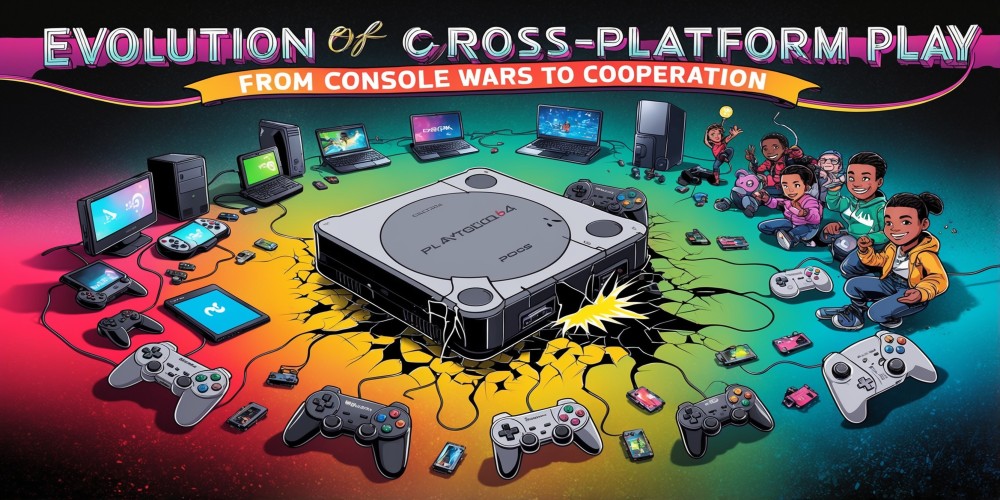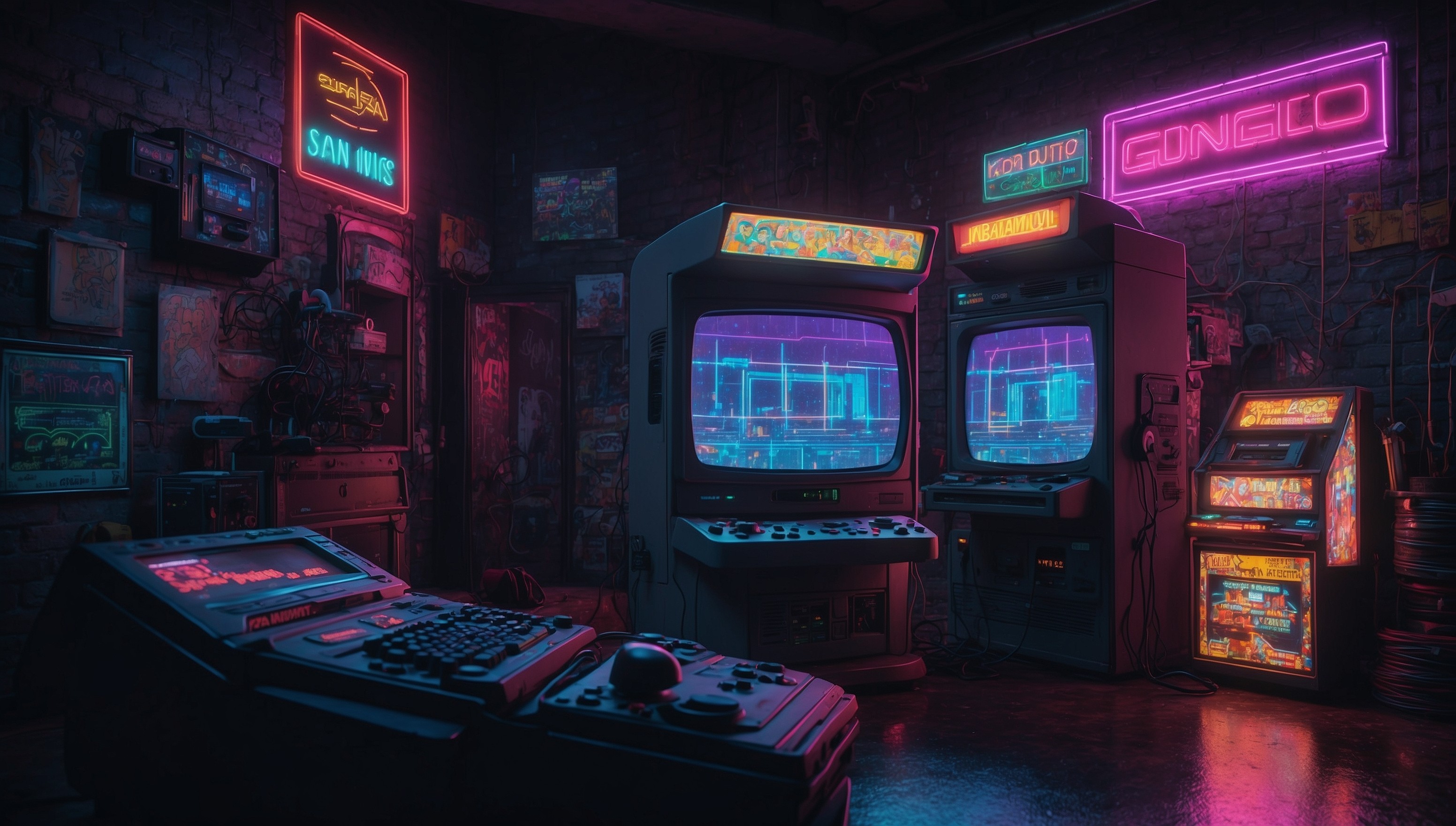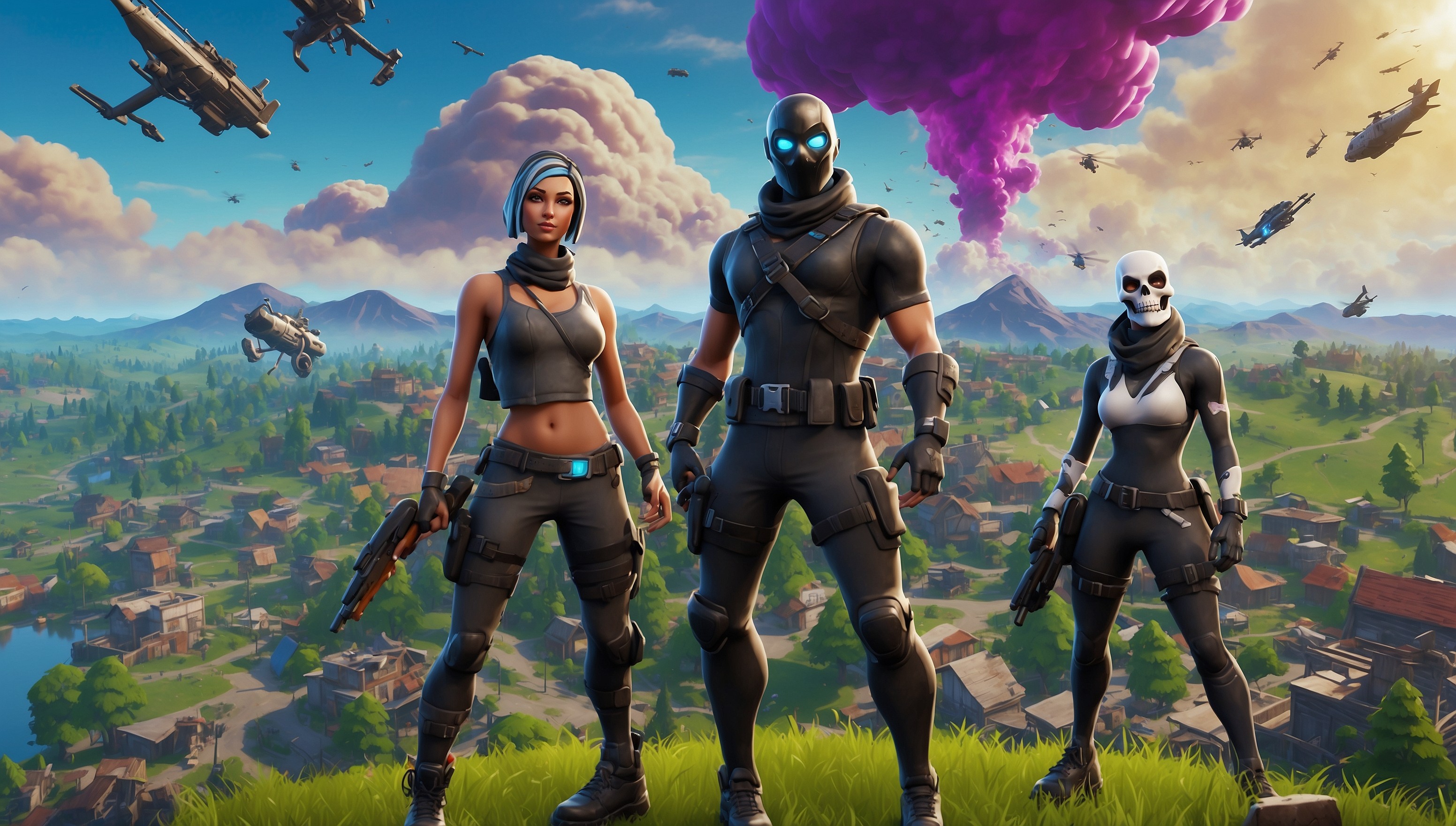Evolution of Cross-Platform Play: From Console Wars to Cooperation
Sep-20-2024

In gaming, the concept of cross-platform play has undergone a radical transformation, reshaping the way we connect with friends and compete against rivals. What once felt like a battleground for brands has now turned into a playground for gamers everywhere. Today, let’s dive into this journey—from the days of fierce console rivalries to a world where cooperation and unity define the experience. Buckle up, it's a wild ride!
The Glory Days of Console Wars

Picture it: the early 2000s. Gaming giants like Sony, Microsoft, and Nintendo were locked in a fierce struggle for supremacy. Each had their own loyal fan base, and the idea of playing together across platforms was about as likely as catching lightning in a bottle. Back then, debates over which console was superior—PlayStation, Xbox, or Nintendo—dominated lunch tables and online forums. Gamers would go to great lengths to defend their chosen platform, and exclusives like Halo and Super Mario were the main ammunition in this digital arms race.
During these times, it felt like the industry thrived on competition. Every announcement of a new exclusive was met with cheers on one side and groans on the other. It was exciting, sure, but it also created walls that isolated players based on their hardware choices. You could have a friend living just a few blocks away, but if they were playing on a different console, you might as well have been worlds apart. Yet, this rivalry kept everyone on their toes, pushing for better graphics, faster processors, and more immersive gameplay. It was the golden age of competition, but it came with a steep cost: connection.
The First Steps Toward Unity
By the mid-2010s, the winds began to shift. The rise of online gaming brought a new reality to the forefront: people wanted to play together, no matter what device they owned. The dream of cross-platform play was no longer just a wishful fantasy—it was becoming a demand. But change was slow. It was like turning a ship; the industry had been sailing one way for so long, and the turn towards cooperation took time.
Smaller titles took the lead here, daring to break the mold. Games like Rocket League and Minecraft laid the groundwork, offering limited cross-play between certain platforms. It was a cautious approach, but it proved there was a desire for shared spaces in the gaming world. It was like the first crack in a dam, hinting at the flood of collaboration that was to come. Even though there were still holdouts, players could sense the shift—like a whisper of a better, more inclusive future.
Fortnite Changes the Game

Then came Fortnite—a game that didn’t just embrace cross-platform play; it practically demanded it. Released in 2017, this battle royale phenomenon swept the gaming world off its feet. It became one of the first major titles to allow players to game together, no matter if they were on PC, PlayStation, Xbox, or even mobile devices. Suddenly, the platform you played on was less important than the fun you were having with friends.
The success of Fortnite didn’t just come from its addictive gameplay or frequent updates; it was also its accessibility. This was a time when the industry couldn’t ignore the power of unity. Sure, there were hiccups—Sony famously dragged its feet on allowing PlayStation players to join in—but the sheer popularity of the game pushed boundaries. The community wasn’t just asking for cross-play anymore; they were demanding it, and publishers had no choice but to listen. In a way, Fortnite acted as a mediator, bringing together platforms that once seemed like oil and water.
Embracing a Cross-Platform Future
Fast forward to today, and cross-platform play is no longer the exception—it’s the expectation. Titles like Call of Duty: Warzone, Apex Legends, and Genshin Impact have embraced the philosophy of playing without borders. This shift has changed the way developers design games, with more focus on creating balanced experiences across various hardware setups. It’s like a giant multiplayer party where everyone’s invited, and the only thing that matters is your skill and teamwork.
For gamers, this evolution has been nothing short of liberating. Now, you can jump into a session with friends, regardless of whether they’re clutching a DualShock, gripping an Xbox controller, or tapping on a phone screen. This level of freedom has allowed gaming communities to grow in ways that seemed impossible just a decade ago. And while there are still some challenges—like syncing updates and balancing gameplay mechanics across platforms—the benefits have been too significant to ignore.
Why Cross-Platform Play Matters

Cross-platform play has done more than just unite players; it’s transformed the entire culture of gaming. Console preferences no longer create as many barriers. It’s a bit like that scene in movies where rivals finally shake hands after realizing they’re better together than apart. And the results have been spectacular: longer game lifespans, healthier online communities, and more chances to connect with people around the world.
Take Call of Duty: Warzone, for example. Its cross-platform capabilities helped it become a social hub during the lockdowns of 2020, giving players a way to stay connected while being physically apart. Suddenly, a player on an Xbox in New York could squad up with a friend using a PC in Tokyo, and that connection made a huge difference when real-world interactions were limited. Gaming became more than just a hobby—it was a way to stay in touch, to share experiences, and to keep the spirit of camaraderie alive.
Challenges Along the Way
But let’s not pretend it was all sunshine and rainbows. The road to cross-platform play has had its fair share of bumps. Technical issues, licensing disagreements, and competitive balancing have all been hurdles in the journey. Developers have to account for different frame rates, control schemes, and even server stability when making cross-play work. It’s a delicate dance—like trying to keep multiple plates spinning without letting one drop.
Some gamers argue that cross-play can create an uneven playing field, especially in competitive games. Mouse and keyboard players often have an edge over those using controllers, leading to debates about fairness. Developers have had to come up with solutions like input-based matchmaking, ensuring that players using similar setups are matched together. It’s not perfect, but it’s a step in the right direction, showing that the industry is willing to adapt and learn from the challenges that arise.
The Bigger Picture: What's Next?
Looking ahead, the future of cross-platform play feels limitless. With cloud gaming and streaming services like Xbox Cloud Gaming and NVIDIA GeForce Now gaining traction, we’re entering an era where the device you own might matter even less than before. Imagine playing a game on your console, then continuing right where you left off on your phone during your commute—seamlessly and effortlessly. It’s like gaming without borders, a world where your favorite experiences are always within reach, regardless of your location or the gadget at your disposal.
Cross-platform play is also pushing companies to think about accessibility and inclusivity in new ways. It’s not just about reaching more players but making sure that everyone, regardless of their background or circumstances, can join in on the fun. The dream is to create a truly global gaming community, where the only thing that matters is your passion for the game.
A New Era of Collaboration
Gone are the days when companies thrived solely by outdoing each other. Now, many understand that collaboration can bring just as many rewards as competition. Cross-play has become a symbol of that change—a reminder that sometimes, it’s better to build bridges than walls. The spirit of cooperation isn’t just a win for gamers; it’s a win for the entire industry. As technology advances and more companies jump on the cross-play bandwagon, the possibilities are endless.
In the end, the evolution of cross-platform play is a story of growth, adaptation, and a shift from rivalry to partnership. It’s like seeing old foes finally sit down for a friendly match, realizing that the real fun lies in playing together rather than against each other. For gamers like us, it means more chances to connect, more ways to play, and, most importantly, more reasons to love the incredible world of gaming. Here's to the next level!







